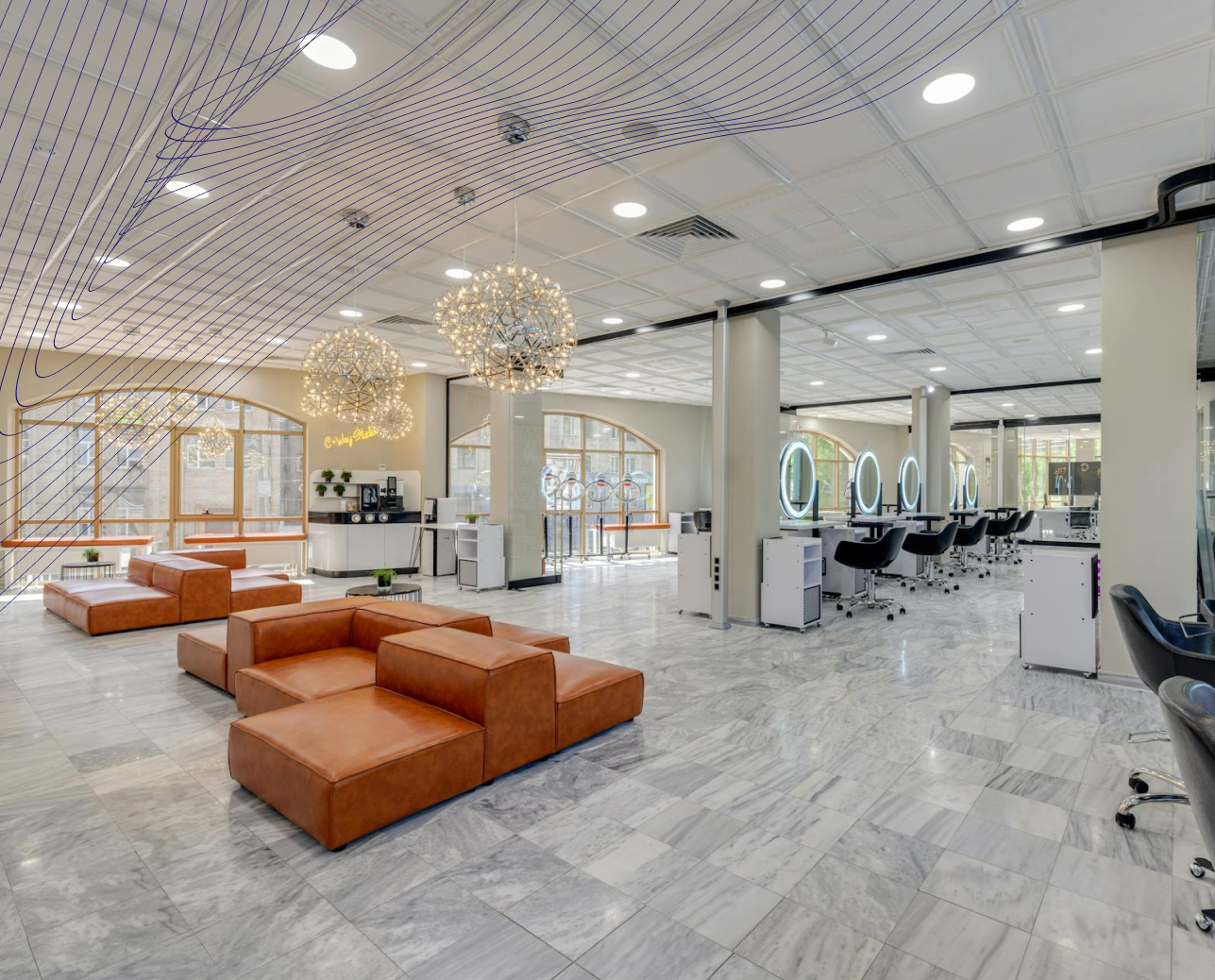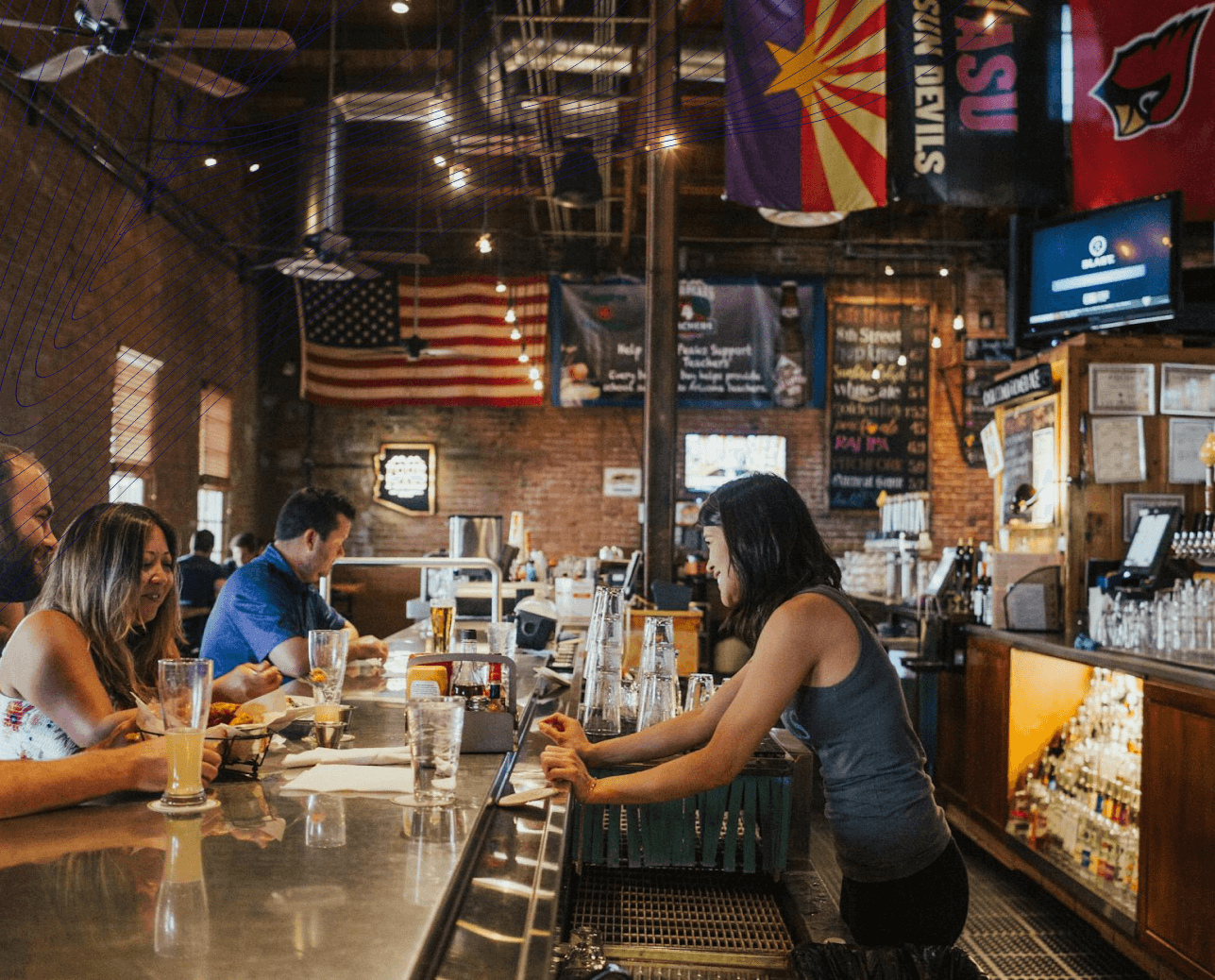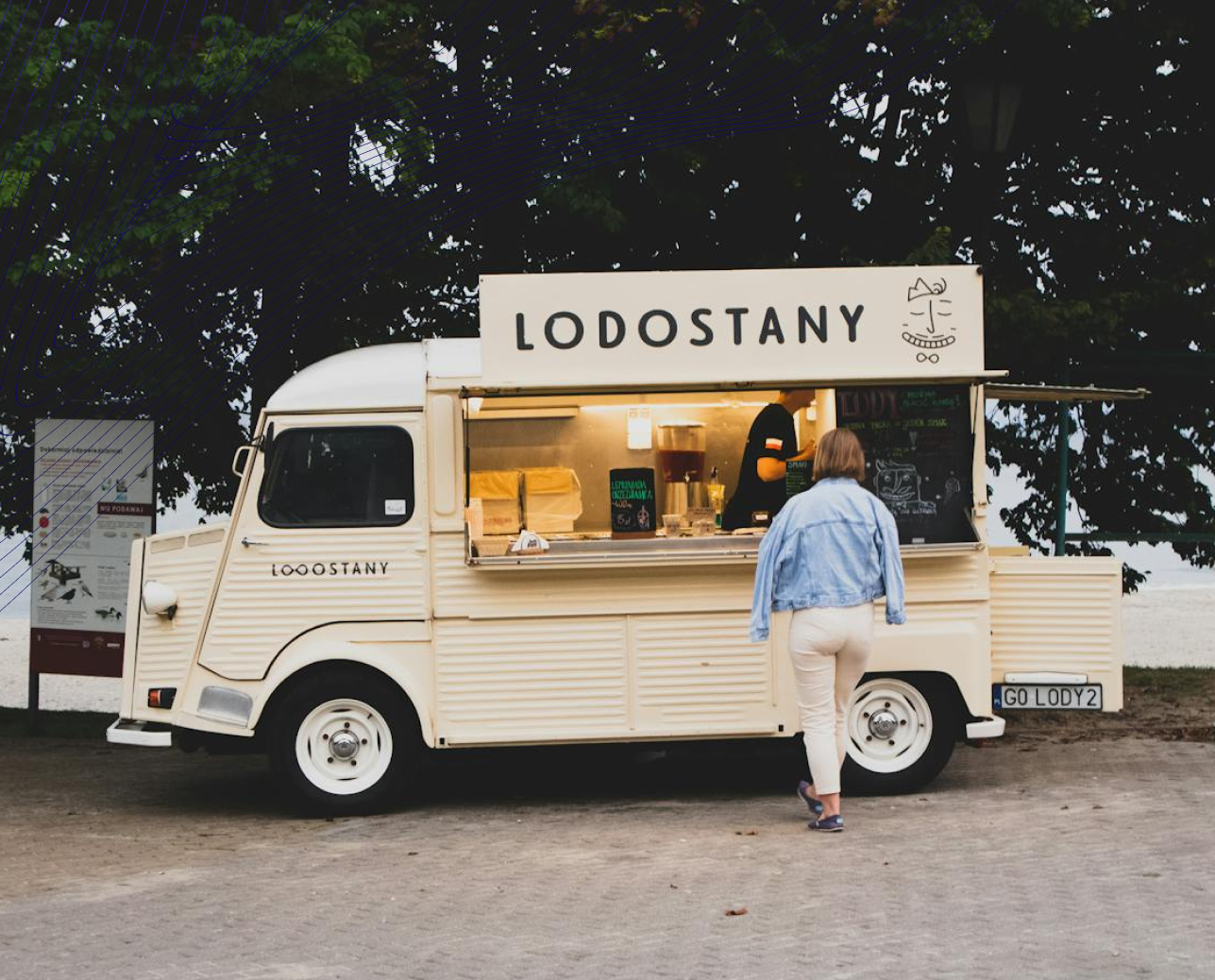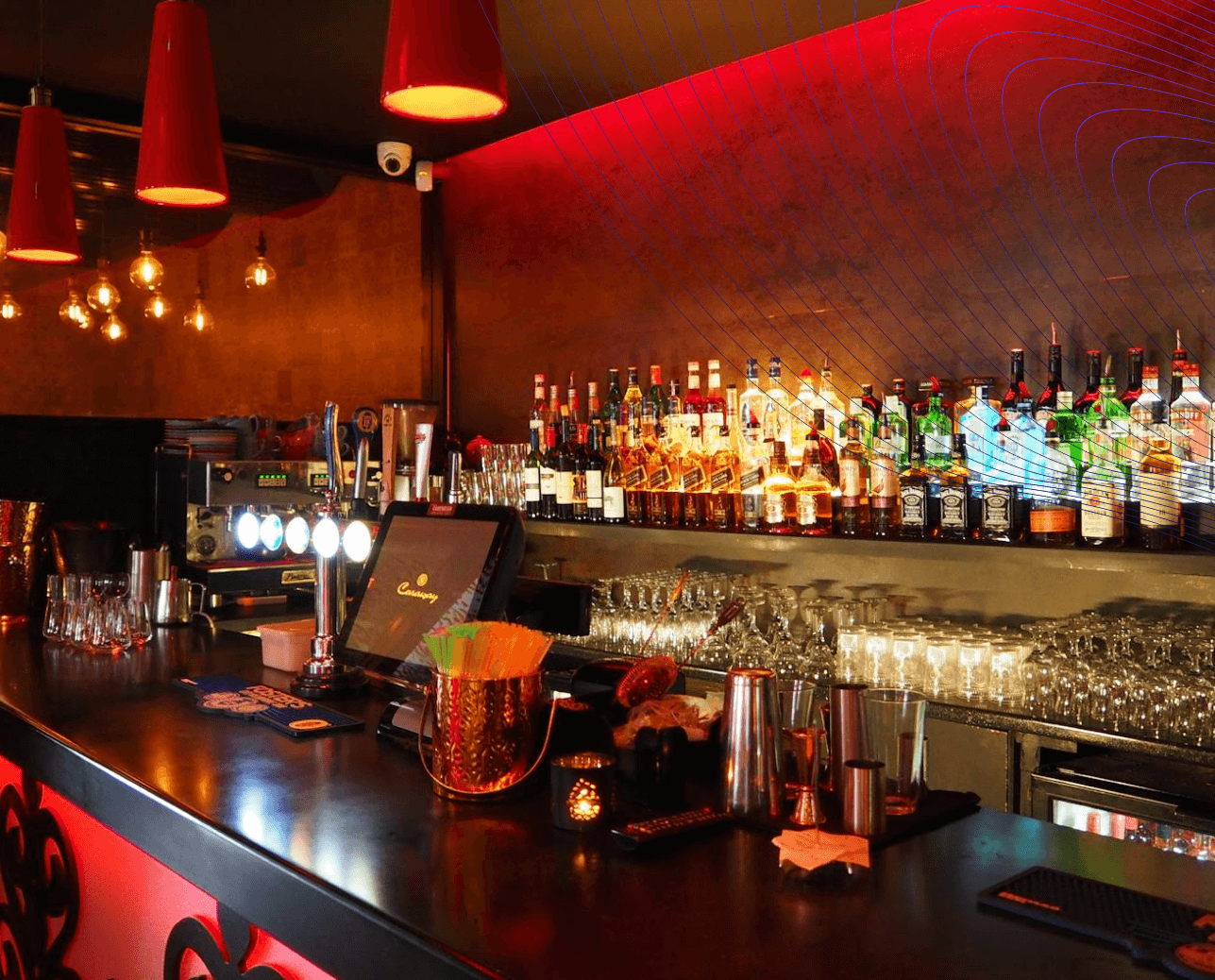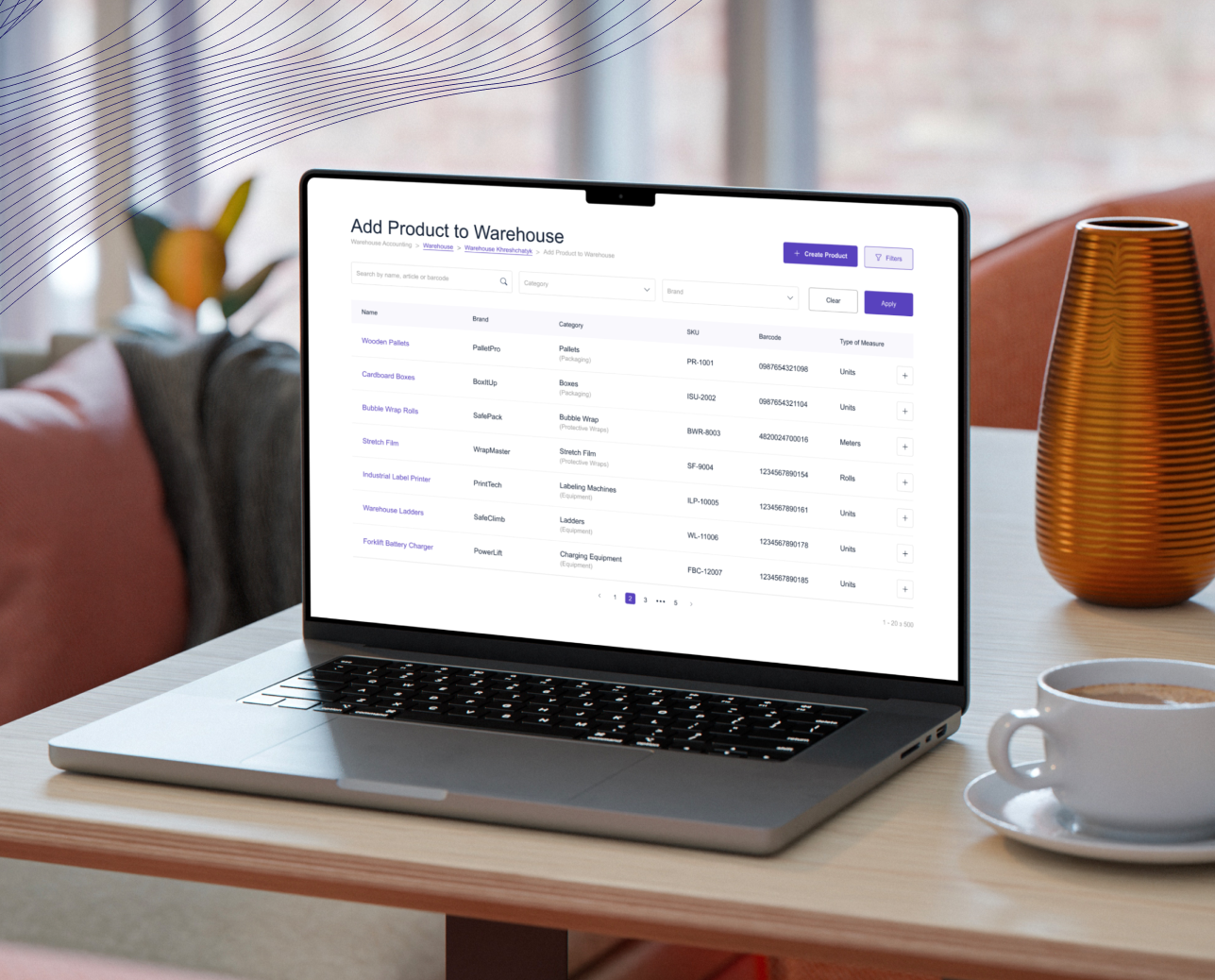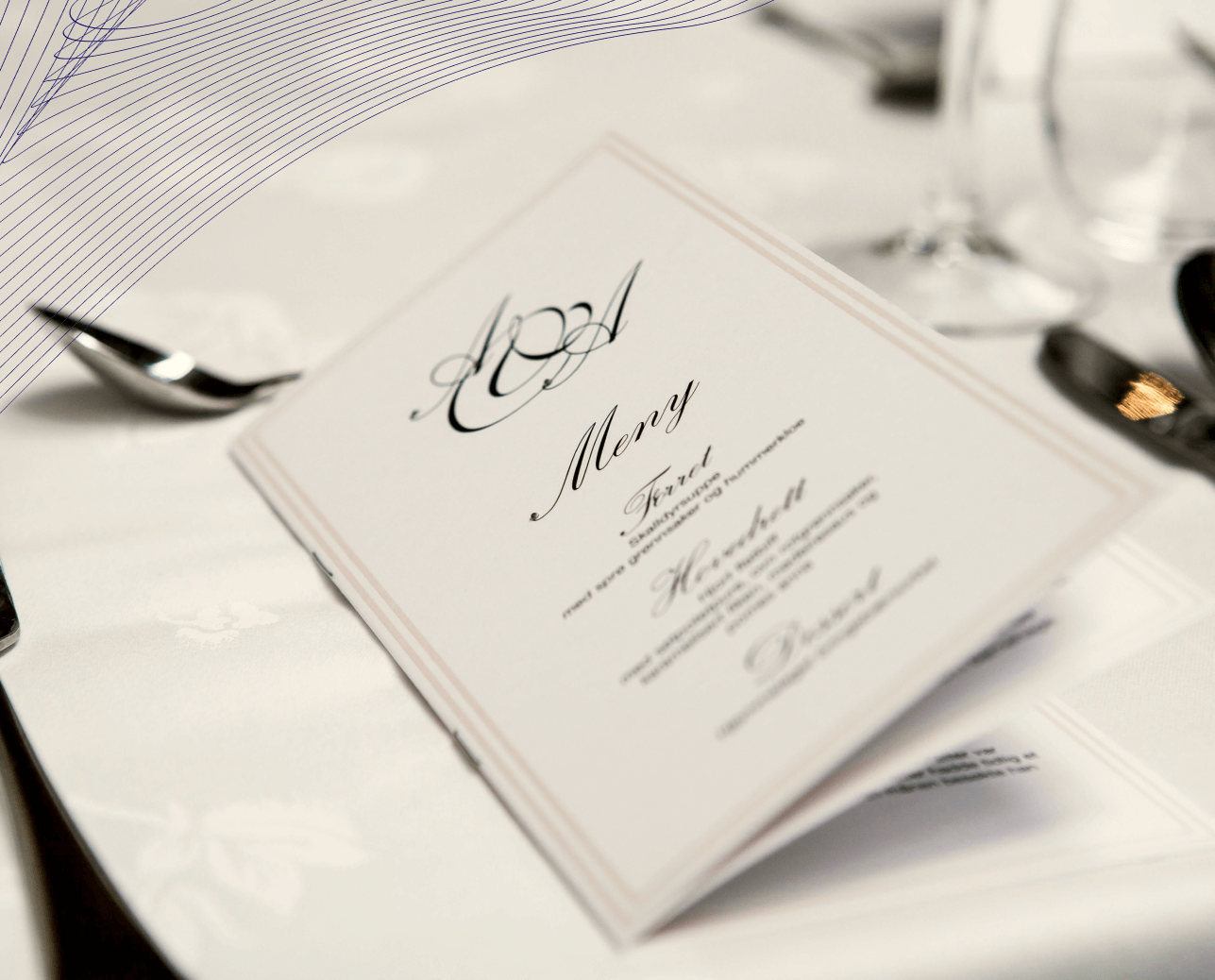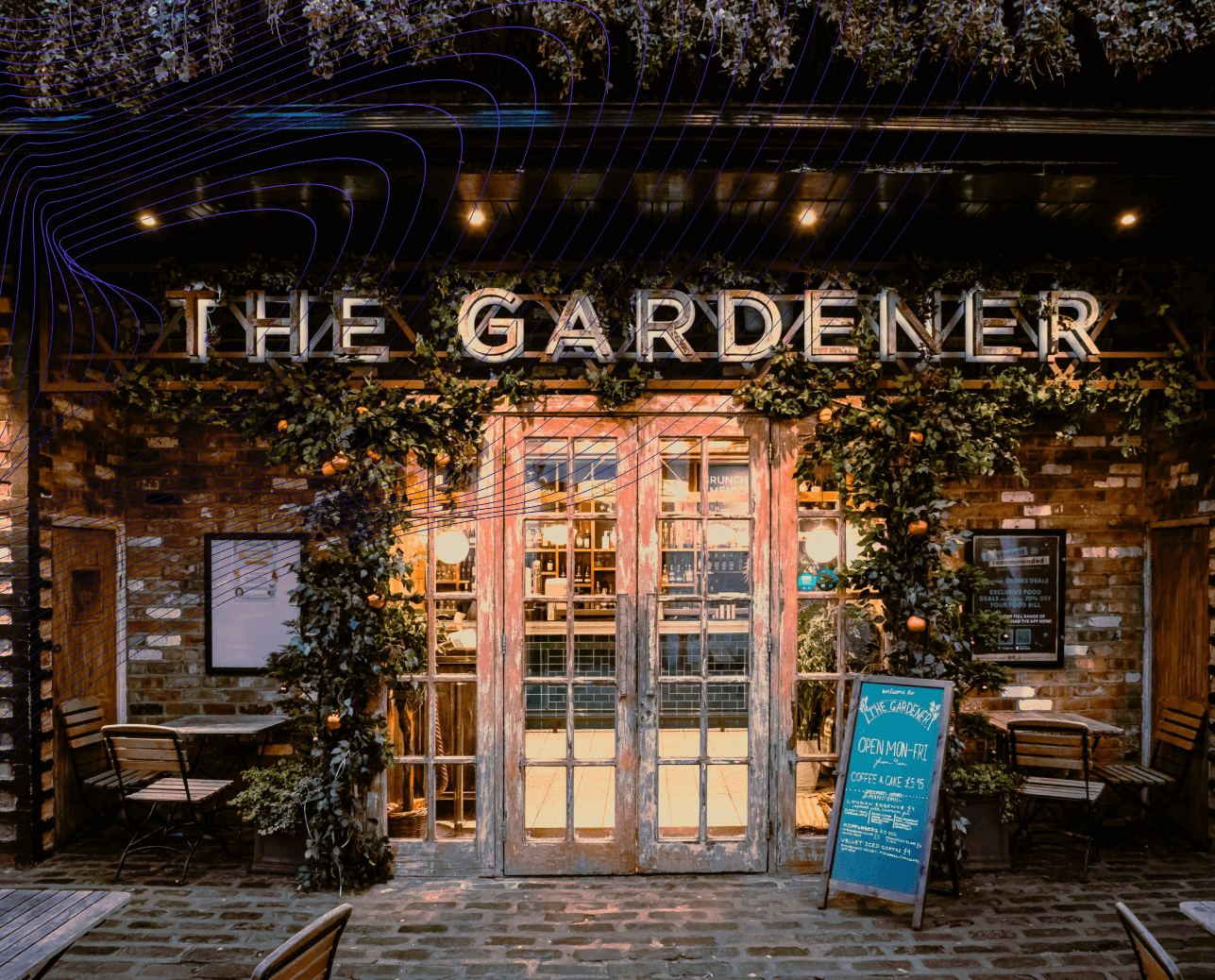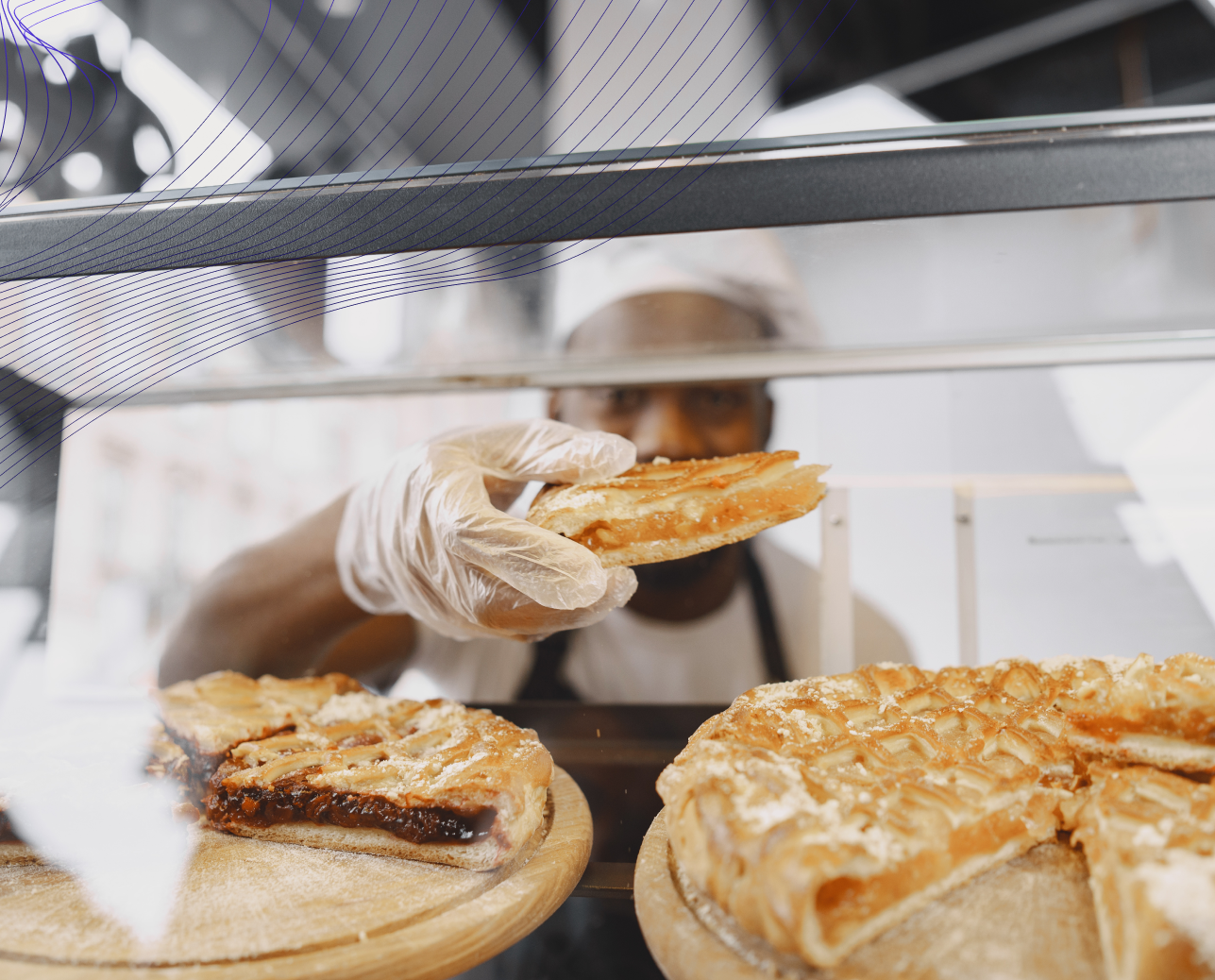शराब की दुकान खोलना : शुरू करने और संचालन के लिए चरण-दर-चरण मार्गदर्शिका
शराब की दुकान खोलना एक रोमांचक और फायदेमंद यात्रा हो सकती है, लेकिन यह ऐसा व्यवसाय नहीं है जिसे आप बिना तैयारी के शुरू करना चाहेंगे। अपने स्थानीय बाजार को समझने से लेकर स्टार्टअप लागतों को प्रबंधित करने तक, हर कदम के लिए सावधानीपूर्वक योजना बनाने की आवश्यकता होती है। चाहे आप शराब की दुकान खोलने का तरीका खोज रहे हों या इसे सफलतापूर्वक प्रबंधित करना चाहते हों, यह मार्गदर्शिका आपको वह सब कुछ बताती है जो आपको जानना आवश्यक है।

शराब की दुकान खोलने की मूल बातें जानें
शराब की दुकान शुरू करना सिर्फ़ शराब बेचने के बारे में नहीं है - यह ग्राहकों की ज़रूरतों को पूरा करने, नियमों का पालन करने और एक ऐसी दुकान बनाने के बारे में है जो सबसे अलग हो। यहाँ बताया गया है कि आधार कैसे तैयार किया जाए।
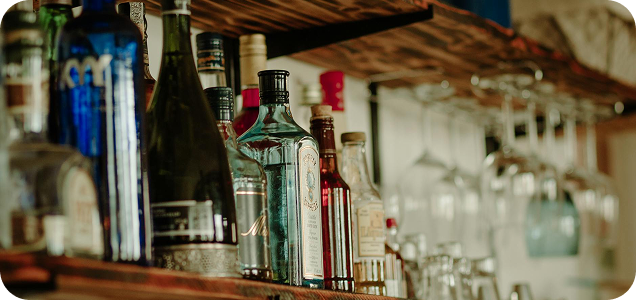
अपने बाज़ार और ग्राहकों को जानें
शराब की दुकान खोलने की आपकी यात्रा का पहला चरण यह समझना है कि आपके ग्राहक कौन हैं और वे क्या चाहते हैं। बाजार अनुसंधान आपको इस बारे में जानकारी देता है कि आप अपने समुदाय की सर्वोत्तम सेवा कैसे कर सकते हैं। इन सवालों से शुरुआत करें:
- आपके ग्राहक कौन हैं? क्या वे क्राफ्ट बीयर के शौकीन हैं, वाइन के शौकीन हैं या फिर किफ़ायती कीमत पर शराब खरीदने वाले लोग हैं? यह जानने से आपको अपनी इन्वेंट्री की योजना बनाने में मदद मिलेगी।
- स्थानीय प्रतिस्पर्धा कैसी है? क्षेत्र में अन्य शराब की दुकानों पर जाएँ और समझें कि वे क्या अच्छा करते हैं और कहाँ कमतर हैं। अगर उनके पास प्रीमियम वाइन या स्थानीय क्राफ्ट बियर की विविधता की कमी है, तो यह आपकी पसंद हो सकती है।
- क्या चल रहा है? रेडी-टू-ड्रिंक कॉकटेल, ऑर्गेनिक वाइन और कम अल्कोहल वाले विकल्प जैसे उद्योग के रुझान तेजी से बढ़ रहे हैं। मांग में जो है उसे पेश करके आगे रहें।
बाजार अनुसंधान आपको अनुमान लगाने से बचाता है, तथा यह सुनिश्चित करता है कि आपका स्टोर ठीक वही प्रदान करता है जिसकी आपके समुदाय को तलाश है।
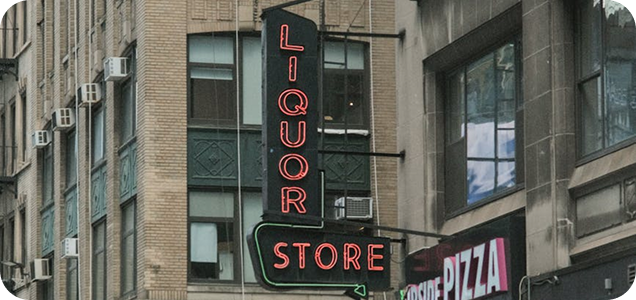
सही स्थान खोजें
खुदरा व्यापार में स्थान ही सब कुछ है, और पैकेज स्टोर या बोतल की दुकान खोलने का तरीका जानने के मामले में भी यह अलग नहीं है। रणनीतिक स्थान दृश्यता बढ़ाता है और लगातार ट्रैफ़िक को आकर्षित करता है। स्थान चुनते समय, इस बात पर विचार करें:
- पहुँच: क्या आपका स्टोर ढूँढना और वहाँ पहुँचना आसान है? पार्किंग और पैदल चलने की सुविधा बहुत महत्वपूर्ण कारक हैं।
- ज़ोनिंग कानून: सुनिश्चित करें कि आपके द्वारा चुना गया स्थान शराब की बिक्री के लिए स्थानीय नियमों का अनुपालन करता है।
- ग्राहक जनसांख्यिकी: अपने स्थान को अपने लक्षित दर्शकों से मिलाएं। उच्च आय वाले पड़ोस प्रीमियम वाइन को पसंद कर सकते हैं, जबकि युवा भीड़ वाले क्षेत्रों में मजबूत शिल्प बियर चयन की आवश्यकता हो सकती है।
सही स्थान का चयन, एक ऐसे स्टोर के बीच का अंतर पैदा कर सकता है जो फलता-फूलता है, तथा एक ऐसा स्टोर जो ध्यान आकर्षित करने के लिए संघर्ष करता है।
शराब की दुकान खोलने के चरण
एक बार जब आप अपना शोध कर लें और एक बढ़िया स्थान पा लें, तो अगले कदम उठाने का समय आ गया है। ये कदम आपको अवधारणा से लेकर उद्घाटन दिवस तक मार्गदर्शन करते हैं, यह सुनिश्चित करते हुए कि कोई भी महत्वपूर्ण चीज़ नज़रअंदाज़ न हो जाए।

चरण 1: व्यवसाय योजना बनाएं
आपकी व्यवसाय योजना आपकी सफलता का रोडमैप है। यह आपके लक्ष्यों, वित्त और रणनीति को रेखांकित करती है, जिससे आपको सही रास्ते पर बने रहने में मदद मिलती है। इन प्रमुख अनुभागों को शामिल करें:
- आपके स्टोर की अवधारणा: आपके स्टोर को क्या खास बनाता है? क्या आप स्थानीय शराब, किफ़ायती शराब या लक्जरी वाइन में विशेषज्ञता रखते हैं?
- वित्तीय योजना: अपने अपेक्षित व्यय और राजस्व का ब्यौरा तैयार करें। इसमें स्टार्टअप लागत, मासिक व्यय और अनुमानित बिक्री जैसे विवरण शामिल करें।
- मार्केटिंग रणनीति: इस बारे में सोचें कि आप अपने स्टोर का प्रचार कैसे करेंगे। क्या आप सोशल मीडिया का इस्तेमाल करेंगे, इवेंट होस्ट करेंगे या भव्य उद्घाटन छूट देंगे?
एक स्पष्ट योजना होने से न केवल आप संगठित रहते हैं, बल्कि बैंकों या निवेशकों से धन प्राप्त करने में भी मदद मिलती है।

चरण 2: अपना वित्तपोषण सुरक्षित करें
शराब की दुकान खोलने की लागत बहुत जल्दी बढ़ सकती है, इसलिए एक ठोस फंडिंग योजना बनाना बहुत ज़रूरी है। यहाँ आपके स्टोर को वित्तपोषित करने के लिए सामान्य विकल्प दिए गए हैं:
- लघु व्यवसाय ऋण: यदि आपके पास एक मजबूत व्यवसाय योजना है तो बैंक और क्रेडिट यूनियन अक्सर नए व्यवसायों के लिए ऋण प्रदान करते हैं।
- व्यक्तिगत बचत: यदि आपके पास बचत है, तो उसका उपयोग करने से ऋण या निवेशकों पर आपकी निर्भरता कम हो सकती है।
- निवेशक: ऐसे लोगों को आकर्षित करें जो आपके दृष्टिकोण में विश्वास करते हों और व्यवसाय में हिस्सेदारी के बदले में पैसा निवेश करने को तैयार हों।
पर्याप्त धनराशि सुरक्षित करने से यह सुनिश्चित होता है कि आप बाद में वित्तीय परेशानी में पड़े बिना किराया, इन्वेंट्री और लाइसेंस जैसे आवश्यक खर्चों को पूरा कर सकते हैं।

चरण 3: लाइसेंसिंग और परमिट का प्रबंधन करें
शराब की दुकान खोलने के लिए सबसे महत्वपूर्ण चरणों में से एक है आवश्यक लाइसेंस प्राप्त करना। इनके बिना, आप कानूनी रूप से शराब नहीं बेच पाएंगे। अधिकांश राज्यों में निम्न की आवश्यकता होती है:
- शराब लाइसेंस आवेदन और संबंधित शुल्क।
- अनुपालन सुनिश्चित करने के लिए पृष्ठभूमि जांच और निरीक्षण।
- आपके चुने हुए स्थान के लिए ज़ोनिंग अनुमोदन का प्रमाण।
लाइसेंस बनने में अक्सर हफ़्ते या महीने लग जाते हैं, इसलिए जल्दी शुरू करें। एक बार जब आपके पास लाइसेंस हो जाए, तो आप इस भरोसे के साथ आगे बढ़ सकते हैं कि आप कानून के दायरे में काम कर रहे हैं।
शराब की दुकान खोलने की लागत
यथार्थवादी वित्तीय अपेक्षाएँ निर्धारित करने के लिए शराब की दुकान शुरू करने की लागत को समझना ज़रूरी है। यहाँ सामान्य खर्चों का विवरण दिया गया है:
ये संख्याएँ आपके स्थान और आपके स्टोर के आकार के आधार पर व्यापक रूप से भिन्न हो सकती हैं। सावधानीपूर्वक बजट बनाना सुनिश्चित करता है कि आप हर खर्च के लिए तैयार हैं:
- आवश्यक वस्तुओं से शुरुआत करें: सबसे पहले उच्च मांग वाले उत्पादों का स्टॉक करें और बाद में विस्तार करें।
- छूट पर बातचीत करें: लागत कम करने के लिए थोक में सामान खरीदें।
- तकनीक में निवेश करें: शराब की दुकान के पीओएस सिस्टम जैसे उपकरण आपको बिक्री के रुझान को ट्रैक करने और इन्वेंट्री को कुशलतापूर्वक प्रबंधित करने में मदद कर सकते हैं।
खर्चों पर कड़ी नजर रखने से आपको बजट के भीतर रहने और लाभ को अधिकतम करने में मदद मिलती है।
अंतिम निर्णय लेने से पहले सुनिश्चित करें कि मी-पॉस ऑनलाइन बुकिंग आपकी आवश्यकताओं और अपेक्षाओं को पूरा करती है।
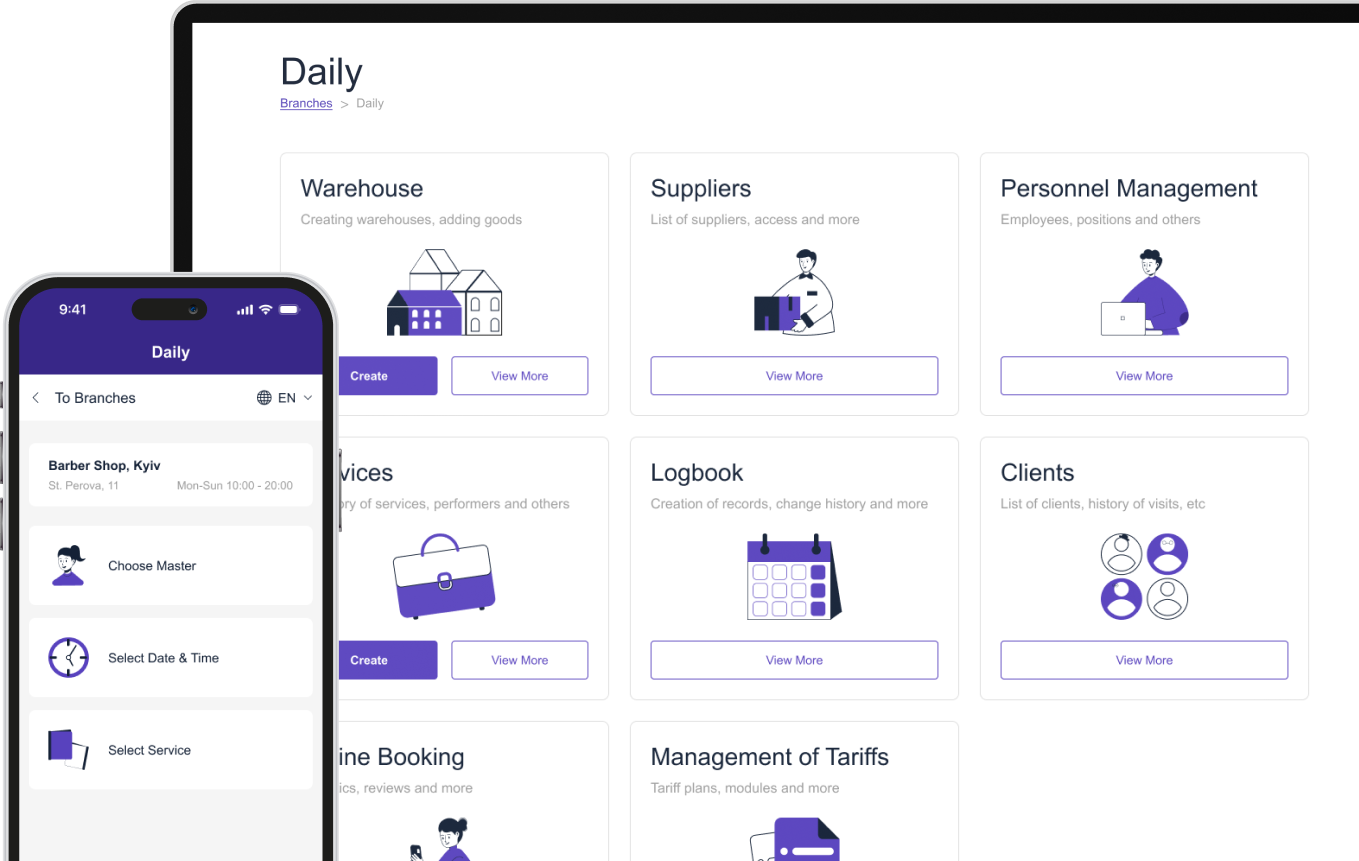
शराब की दुकान खोलने के लिए आपको क्या चाहिए?
शराब की दुकान को कानूनी रूप से चलाने के लिए, आपको कुछ महत्वपूर्ण बातों का ध्यान रखना होगा। तो, शराब की दुकान खोलने के लिए आपको क्या चाहिए? आइए इसे चरण दर चरण समझते हैं।

अपना व्यवसाय पंजीकृत करें
अपने स्टोर के लिए नाम चुनकर और उसे अपने राज्य में पंजीकृत कराकर शुरुआत करें। आपको IRS से टैक्स आईडी (EIN) की भी आवश्यकता होगी, जो आपको कानूनी रूप से पेरोल संभालने और करों का भुगतान करने की अनुमति देता है।

अपना शराब लाइसेंस प्राप्त करें
शराब पीने का लाइसेंस लेना अनिवार्य है। यह प्रक्रिया राज्य के हिसाब से अलग-अलग होती है, लेकिन आम तौर पर इसमें ये शामिल होते हैं:
- आवेदन पत्र दाखिल करना तथा शुल्क का भुगतान करना।
- पृष्ठभूमि जांच और निरीक्षण पास करना।
- इस बात का प्रमाण दिखाना कि आपका स्टोर ज़ोनिंग कानूनों का अनुपालन करता है।
इस कदम में समय लग सकता है, इसलिए इसे यथाशीघ्र शुरू करना बुद्धिमानी है।

बीमा स्थापित करें
देयता बीमा आपके व्यवसाय को संभावित जोखिमों से बचाता है, जैसे कि परिसर में दुर्घटनाएँ या शराब से संबंधित दावे। यह आपके स्टोर खोलने का एक अनिवार्य हिस्सा है।
एक बार ये चरण पूरे हो जाएं, तो आप अपने दरवाजे खोलने और ग्राहकों को कानूनी और आत्मविश्वास से सेवा देने के लिए तैयार हो जाएंगे।
शराब की दुकान सफलतापूर्वक कैसे चलाएँ
शराब की दुकान खोलना तो बस शुरुआत है - इसे प्रभावी ढंग से चलाना ही असली काम है। शराब की दुकान को सफलतापूर्वक चलाने के लिए इन्वेंट्री प्रबंधन, ग्राहक सेवा और स्मार्ट मार्केटिंग के मिश्रण की आवश्यकता होती है।
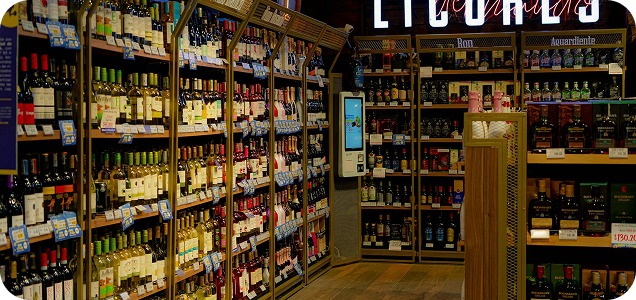
अपनी इन्वेंट्री पर महारत हासिल करें
इन्वेंट्री आपके सबसे बड़े निवेशों में से एक है, इसलिए इसे सावधानीपूर्वक प्रबंधित करना महत्वपूर्ण है। यहाँ बताया गया है कि कैसे:
- बिक्री पर नज़र रखने और अपने बेस्टसेलर की पहचान करने के लिए POS सिस्टम का उपयोग करें।
- अपनी अलमारियों को ताज़ा रखने के लिए मौसमी उत्पादों को घुमाते रहें।
- हानि या चोरी को रोकने के लिए नियमित रूप से इन्वेंट्री का ऑडिट करें।
अच्छा इन्वेंट्री प्रबंधन यह सुनिश्चित करता है कि आपके पास हमेशा वह सब कुछ हो जो आपके ग्राहक चाहते हैं, और वह भी बिना अधिक खर्च के।
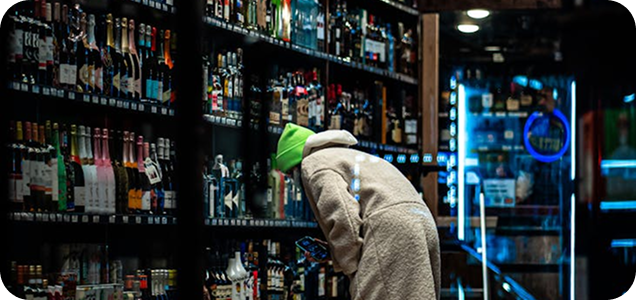
ग्राहक अनुभव पर ध्यान केंद्रित करें
ग्राहक आपके व्यवसाय का दिल हैं। अपने कर्मचारियों को प्रशिक्षित करें:
- ग्राहकों की प्राथमिकताओं के आधार पर व्यक्तिगत अनुशंसाएं प्रदान करें।
- दुकान को साफ और सुव्यवस्थित रखें।
- मैत्रीपूर्ण, पेशेवर सेवा प्रदान करें।
एक सकारात्मक अनुभव ग्राहकों को बार-बार वापस आने के लिए प्रेरित करता है तथा मौखिक रेफरल को प्रोत्साहित करता है।
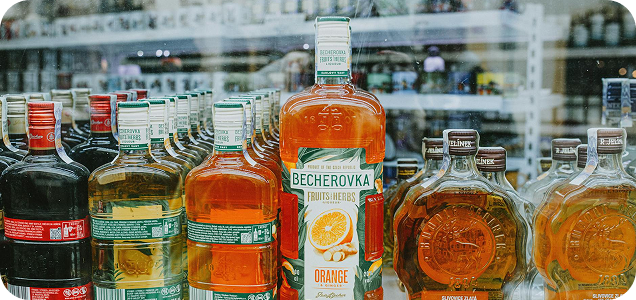
अपने स्टोर का प्रचार करें
मार्केटिंग सिर्फ़ आपके शुरुआती दिन के लिए नहीं है - यह आपके व्यवसाय को आगे बढ़ाने के लिए है। यहाँ कुछ रणनीतियाँ दी गई हैं:
- नए उत्पादों और सौदों को उजागर करने के लिए सोशल मीडिया पर नियमित रूप से पोस्ट करें।
- नये ग्राहकों को आकर्षित करने के लिए टेस्टिंग जैसे आयोजनों का आयोजन करें।
- बार-बार खरीदारी करने वाले ग्राहकों को पुरस्कृत करने के लिए वफादारी कार्यक्रम पेश करें।
प्रभावी मार्केटिंग से आप एक वफादार ग्राहक आधार बना सकेंगे और अपने स्टोर को फलते-फूलते रख सकेंगे।
निष्कर्ष
शराब की दुकान खोलना और चलाना एक चुनौतीपूर्ण लेकिन फायदेमंद सफ़र है। इस गाइड का पालन करके, आप जान जाएँगे कि शराब की दुकान कैसे खोली जाए, लागतों का प्रबंधन कैसे किया जाए और लाइसेंसिंग आवश्यकताओं को कैसे पूरा किया जाए। ME-POS जैसे टूल की मदद से, आप अपने संचालन को सुव्यवस्थित कर सकते हैं और अपने व्यवसाय को बढ़ाने पर ध्यान केंद्रित कर सकते हैं।
सही योजना और अपने ग्राहकों के प्रति प्रतिबद्धता के साथ, आपकी शराब की दुकान समुदाय की पसंदीदा और आय का एक विश्वसनीय स्रोत बन सकती है। चलिए शुरू करते हैं - आप यह कर सकते हैं!

क्या यह लेख मददगार था?
इसे रेट करने के लिए स्टार पर क्लिक करें!
आपके वोट के लिए धन्यवाद!

औसत रेटिंग: 5/5 वोट्स: 1
इस पोस्ट को रेट करने वाले पहले व्यक्ति बनें!
अगला
बेकरी कैसे खोलें?और देखें
संबंधित लेख
स्पा मसाज व्यवसाय शुरू करना: सफलता के लिए एक संपूर्ण मार्गदर्शिका
वेलनेस इंडस्ट्री तेजी से बढ़ रही है, जो स्पा व्यवसाय शुरू करने के इच्छुक उद्यमियों के लिए बेहतरीन अवसर प्रदान करती है। आज की तेज़-रफ़्तार दुनिया में, ...
फ़ूड ट्रक की कीमतों को समझना: एक व्यापक गाइड
तो आप फ़ूड ट्रक शुरू करना चाहते हैं? बढ़िया विकल्प! लेकिन सड़क पर उतरने से पहले, आपको यह पता लगाना होगा कि फ़ूड ट्रक की लागत कितनी है और इसके साथ क्या...
पालतू जानवरों की दुकान कैसे खोलें, इस पर संपूर्ण मार्गदर्शिका: अनोखे चरण और सुझाव
पालतू जानवरों का उद्योग तेज़ी से फल-फूल रहा है, जिससे पालतू जानवरों की दुकान शुरू करने का यह एक आदर्श समय बन गया है। पालतू जानवरों के स्वामित्व में लग...
आइसक्रीम ट्रक व्यवसाय कैसे शुरू करें?
आइसक्रीम ट्रक व्यवसाय शुरू करना उन लोगों के लिए एक आकर्षक और आनंददायक उद्यम हो सकता है जो खुद के मालिक बनना, समुदाय के साथ जुड़ना और स्वादिष्ट व्यंजन ...
जिम को व्यवसाय के रूप में कैसे शुरू करें: अवधारणा से वास्तविकता तक
जिम व्यवसाय शुरू करना एक पुरस्कृत अवसर है जो उद्यमी सफलता के साथ फिटनेस के लिए जुनून को जोड़ता है। हालाँकि, इसमें जगह किराए पर लेने और उपकरण खरीदने से...
रेस्टोरेंट मेनू डिज़ाइन कैसे करें?
रेस्टोरेंट का मेनू डिजाइन करना रेस्टोरेंट उद्योग का एक महत्वपूर्ण पहलू है। एक अच्छी तरह से तैयार किया गया मेनू पेश किए जाने वाले व्यंजनों की सूची से क...
बार कैसे खोलें: महत्वाकांक्षी उद्यमियों के लिए चरण-दर-चरण मार्गदर्शिका
नया बार खोलना एक रोमांचक काम है, लेकिन इसके लिए सावधानीपूर्वक योजना बनाने और विवरण पर ध्यान देने की आवश्यकता होती है। चाहे आप एक आरामदेह पब या एक शानद...
फ़ार्मेसी व्यवसाय कैसे खोलें, इस पर आपकी अंतिम मार्गदर्शिका
अगर सही तरीके से काम किया जाए तो फार्मेसी व्यवसाय शुरू करना फायदेमंद और लाभदायक हो सकता है। फ़ार्मेसियाँ आवश्यक दवाइयाँ, स्वास्थ्य सलाह और उत्पाद प्रद...
स्पा मसाज व्यवसाय शुरू करना: सफलता के लिए एक संपूर्ण मार्गदर्शिका
वेलनेस इंडस्ट्री तेजी से बढ़ रही है, जो स्पा व्यवसाय शुरू करने के इच्छुक उद्यमियों के लिए बेहतरीन अवसर प्रदान करती है। आज की तेज़-रफ़्तार दुनिया में, ...
फ़ूड ट्रक की कीमतों को समझना: एक व्यापक गाइड
तो आप फ़ूड ट्रक शुरू करना चाहते हैं? बढ़िया विकल्प! लेकिन सड़क पर उतरने से पहले, आपको यह पता लगाना होगा कि फ़ूड ट्रक की लागत कितनी है और इसके साथ क्या...
पालतू जानवरों की दुकान कैसे खोलें, इस पर संपूर्ण मार्गदर्शिका: अनोखे चरण और सुझाव
पालतू जानवरों का उद्योग तेज़ी से फल-फूल रहा है, जिससे पालतू जानवरों की दुकान शुरू करने का यह एक आदर्श समय बन गया है। पालतू जानवरों के स्वामित्व में लग...
आइसक्रीम ट्रक व्यवसाय कैसे शुरू करें?
आइसक्रीम ट्रक व्यवसाय शुरू करना उन लोगों के लिए एक आकर्षक और आनंददायक उद्यम हो सकता है जो खुद के मालिक बनना, समुदाय के साथ जुड़ना और स्वादिष्ट व्यंजन ...
जिम को व्यवसाय के रूप में कैसे शुरू करें: अवधारणा से वास्तविकता तक
जिम व्यवसाय शुरू करना एक पुरस्कृत अवसर है जो उद्यमी सफलता के साथ फिटनेस के लिए जुनून को जोड़ता है। हालाँकि, इसमें जगह किराए पर लेने और उपकरण खरीदने से...
रेस्टोरेंट मेनू डिज़ाइन कैसे करें?
रेस्टोरेंट का मेनू डिजाइन करना रेस्टोरेंट उद्योग का एक महत्वपूर्ण पहलू है। एक अच्छी तरह से तैयार किया गया मेनू पेश किए जाने वाले व्यंजनों की सूची से क...
बार कैसे खोलें: महत्वाकांक्षी उद्यमियों के लिए चरण-दर-चरण मार्गदर्शिका
नया बार खोलना एक रोमांचक काम है, लेकिन इसके लिए सावधानीपूर्वक योजना बनाने और विवरण पर ध्यान देने की आवश्यकता होती है। चाहे आप एक आरामदेह पब या एक शानद...
फ़ार्मेसी व्यवसाय कैसे खोलें, इस पर आपकी अंतिम मार्गदर्शिका
अगर सही तरीके से काम किया जाए तो फार्मेसी व्यवसाय शुरू करना फायदेमंद और लाभदायक हो सकता है। फ़ार्मेसियाँ आवश्यक दवाइयाँ, स्वास्थ्य सलाह और उत्पाद प्रद...
और देखें








